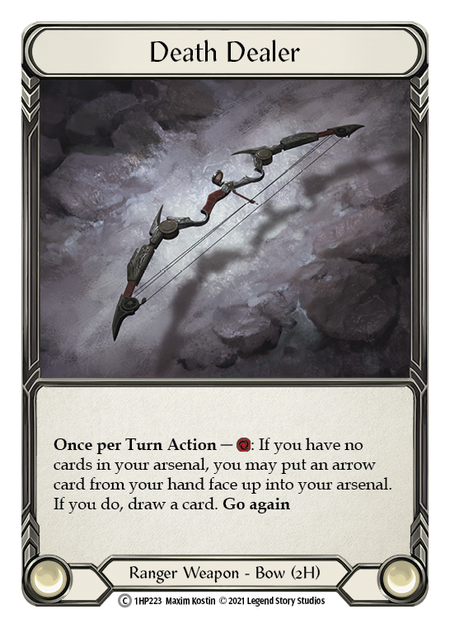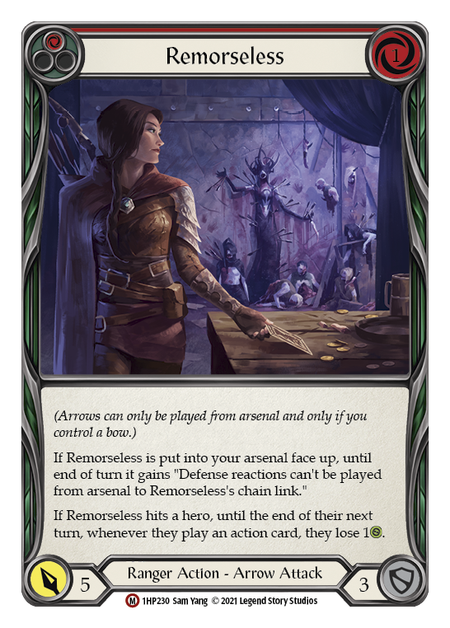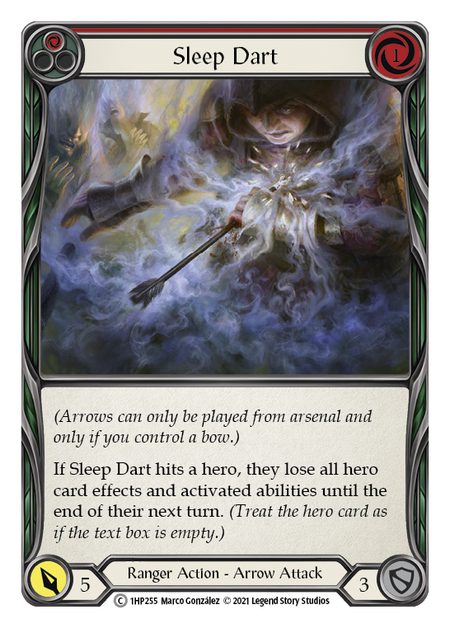In case you missed it, at a major Flesh and Blood tournament this past week in Chicago, Brodie Spurlock's Azalea bested Michael Hamilton's Iyslander twice to meet Levi Rauch in a mirror match final. And if that comes as a surprise to you, you're not alone.
But for the Azalea faithful, this turn of events- while surprising in how quickly it developed only hours after Outsiders' release- was not at all unexpected. In fact, we've been seeing the signs of Azalea's ascent for a long time.
(Insert your favorite hipster meme here.)
Despite Lexi's position as the preeminent Ranger for over a year, Azalea's been steadily picking up tools, and with Outsiders we've finally reached a critical mass. Here's why Azalea's newfound success isn't a fluke - and why you need to start learning how to counter the Ace in the Hole.
Empty Threats
To talk about why Azalea's a legitimate contender now, we need to examine what's been holding her back. Azalea's primary strategy revolves around putting arrows into arsenal from the top of your deck (so that they'll gain dominate), then tagging the opponent with a debilitating on-hit effect. But in Arcane Rising, those on-hit effects just weren't all that punishing. With the notable exception of Red in the Ledger, the worst thing you could suffer from an arrow was a +1 cost to your first attack - and then Ice came along and made that mild tax look silly.


Death Dealer is an incredible asset, but it's biggest advantage - generating resources while replacing the pitch card in hand - is easy to overlook when your deck can redline. On many turns, the cost to activate Death Dealer is the only reason you're pitching, making it feel more like card cycling.
Crucible of War gave the first real targeted on-hit arrows, which shifted Ranger's focus toward disruption in a way that would become its signature. Remorseless doubled down on the theme of penalizing wide attack patterns, while Sleep Dart offered a way to strip opponents of their hero powers.


But overall, damage output remained low; and while we could annoy enemies, we struggled to defeat them. We relied on buffs to make our dominated arrows threatening, but that led to fickle hands where an imbalance one way or the other between arrows and buffs could lead to catastrophe. Failing to close games became the hallmark of the class.
Azalea fans welcomed the new of a new Ranger in Tales of Aria, but soon found her eclipsed by this newcomer, who could utilize 2 arsenal slots and effortlessly tack go again onto her arrows. The Ranger rivalry to come would further relegate Azalea to the backburner, as now you could get your archery fix without resorting to 'the worst hero in the game'.



At every opportunity, Azalea was given the wrong tools, novel gimmicks and role players that would have been fine if we had the central core we needed. New bows failed to improve upon the original Death Dealer formula. Bigger arrows didn't fit our cost curve and answered decks that weren't succeeding in the meta anyway. And whenever a tech card debuted, its ceiling appeared to be 'cute gimmick', and its floor 'unplayable'.
Still, we tried. Sometimes we even found moderate success. Slowly, a central card pool was forming, a core that Azalea could work from built around cards like Bolt'n'Shot and Rain Razors and Seek and Destroy. But we lacked the explosive payoffs that other decks had. And there was always the looming risk that whatever Azalea got, Lexi could utilize better.


Signs of Hope
We actually had good matchups along the way. For a time, Azalea was one hero who had moderate success against Chane. Azalea had tools to answer Starvo, but at the expense of many other matchups. And while Illusionists absolutely stumped us, Fai was an incredibly favorable matchup, especially when Azalea was built to recur her specialization arrow.
Despite all that, Lexi continued to find more success. A solid B-tier choice since her debut, Lexi enjoyed off-meta success while Azalea struggled to justify herself. There were certainly matchups where Azalea had the edge, but it was hard for serious competitive players to justify doing twice as much work each turn to do what Bravo could do with a couple blues, or Iyslander could so at instant speed.
The path forward became clear when Dynasty debuted aim counters. Here was a mechanic that Lexi could not just as easily maximize, that rewarded the coordinated gameplay that Azalea uniquely excelled at. And it offered real advantages that other classes didn't have.


The only problem: it asked us to give up our Death Dealer to reliably utilize aim. It was a bridge too far for many, and aim-focused arrows seemed destined to join the other gimmicks found among the class' card pool.
But aim synergy cards were the payoff cards we'd been waiting for. Dead Eye offered the disruptive control we so desperately wanted. Drill Shot ruined equipment. In contrast to cards like Fatigue Shot and even Remorseless, these were universally relevant penalties. We just needed to integrate aim counters with what we were already doing.


Outsiders and the Rise of Azalea
Designed Bryan Gottlieb recently cited quivers as an example of good power creep in game design. And if there's one thing Azalea desperately needed, it's a merciful dose of power creep. Azalea's signature Crow's Nest organically integrated aim counters with her core strategy, and set the stage for her ascent.


And much has been made of Codex of Frailty. It's an incredible card that Azalea utilizes to perfection.
But there's no one card to point to that supports the premise that Azalea is here to stay. It's for that very reason, in fact, that I believe she's finally reached the mountaintop: Ranger finally has a baseline of disruptive, playable cards that give the deck consistency for the first time.
Azalea is no longer reliant on hitting her key cards to present good turns. She doesn't need extensive sideboarding to swap entire pools of match-specific cards. Her on-hit effects now have wide application, and impact most heroes she'll face.



The diseases of the Pits proved key to this. Taking a cue from Ice decks, these tokens change how the opponent has to play their next turn. Bloodrot Pox tokens, in particular, allow Azalea to overcome the designed limitation of 'arrows deal 4-5 damage'; Infecting Shot, for example, is a 1-for-5 that threatens 7 damage without any assistance.
Buffs are also key to Azalea, and Outsiders offers incredible ones. The Lace trio are all +3 for 0 (because they didn't bother with non-red versions that we weren't going to use) and tack diseases onto any arrow. Melting Point offers a +4 that can destroy weapons. And Toxicity works in extra damage for your pitch value by making it an on-hit effect - a hurdle that Azalea can easily clear thanks to her dominate.



Bolt'n' Shot became a staple of Azalea decks because it allowed her to change up her tall attack pattern. Falcon Wing offers much the same advantage, acting as an easy 0-for-4 go again if your aim game is on point. Similarly, Death Touch defies the rule of 'Rangers don't have 6s'. Changing up your patterns is essential to both responding to your opponent and catching them off guard.


Speaking of catching them off guard, does anything surprise like a defense reaction? Azalea benefits from Riptide's existence by gaining access to a host of traps, and you might just consider playing a few.


All of these additions add up to a deck that no longer relies on filler and filtering - and a card pool that can support multiple ways of building the same hero.
Not a Moment, It's a Movement
If the last year of Flesh and Blood has taught us anything, it's that disruption has staying power. Ice heroes like Oldhim and Iyslander have become permanent fixtures of the competitive landscape, to the point that the conventional wisdom of 'just go aggro' no longer carries decks. Despite her extremely effective 'cheeri0s' build, Briar has still not managed to reach Living Legend; and while heroes like Fai have lost significant momentum any time the ban hammer comes down on them, Ice has persisted.
Azalea is cut from the same cloth, but offers the option to play a proactive, aggressive deck alongside disruption of a different type. Opponents who have adapted to the additional tax of Frostbite will now need to plan for Frailty, Inertia, and Bloodrot Pox as well; and preparing for all 4 of those tokens dilutes their decks.
Furthermore, the Chicago Brawl proved that Azalea has plenty of game into Ice heroes, who aren't going anywhere. Because her attacks have so many steps, they're actually quite modular; and rather than a Frostbite taxing your attack beyond what you can pay, it simply cuts out one piece of it, allowing you to continue forward with a less potent version.
Because of her disruption, Azalea is - and long has been - an excellent choice into aggressive opponents. Red in the Ledger is an absolute shutdown on the go again so many decks rely on, whether their attack patterns are wide or tall. Between Nock the Deathwhistle, Codex of Frailty, Memorial Ground, and Give and Take, you can easily build your deck to recur Red in the Ledger multiple times, locking opponents out of the game.




Azalea is well positioned for the meta - with one notable weakness. Dromai continues to defy expectations with an outsized presence in the meta, despite many unfavorable matchups. And while Azalea is more capable than ever of racing Dromai, it requires sustained tempo and can't afford missed hands. Like other tall decks, wasting attacks on dragons is just too expensive.
If patterns hold true, Azalea's role as a disruption deck will mean she continues to have a role to play going forward. Disruption decks are a robust archetype, as the particulars of what they disrupt tend to make them distinct from one another, and are consequentially less likely to be replaced by new hotness that does the same but better. (Compare this to the Aggro Deck of the Month.)
But the biggest reason I'm so sure of Azalea's evergreen position is because I've been attached to the deck for so long. We were never lacking for power turns and power cards. What we lacked was a backbone that could carry the weight between our big plays. With a well rounded core now available to the class, Rangers have finally come of their own and are ready to influence the meta - and every meta going forward.




